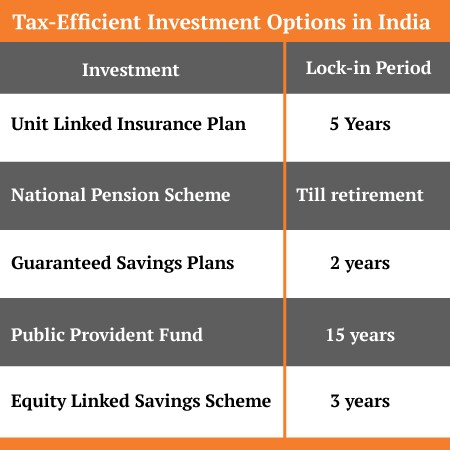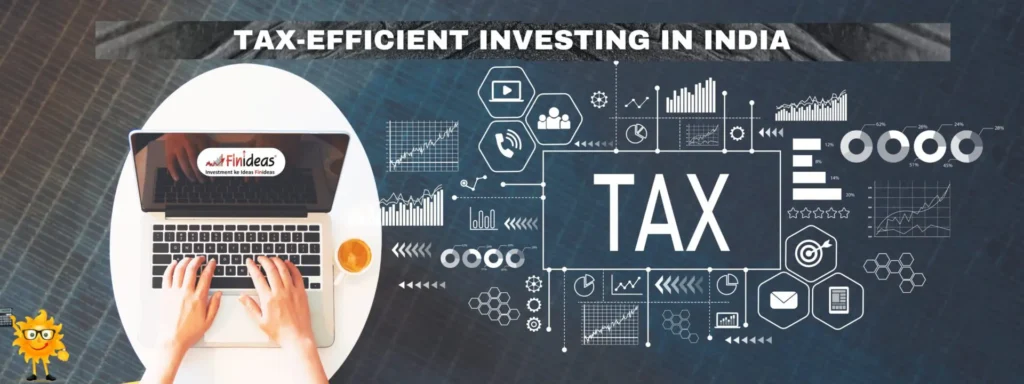How to Create a Tax-Efficient Investment Portfolio in India
Saving and investing money is important, but doing it smartly is even better. One smart way is to build a tax-efficient investment portfolio — this means choosing investments that help you grow your wealth while also reducing your tax burden.
Let’s understand how you can create a tax-efficient portfolio in India, step by step.
1. Understand Your Income and Tax Bracket
Before investing, know how much tax you need to pay. In India, taxes are charged based on your income slab. For example:
- Income up to ₹2.5 lakh – No tax
- ₹2.5 – ₹5 lakh – 5%
- ₹5 – ₹10 lakh – 20%
- Above ₹10 lakh – 30%
If your income is higher, you’ll benefit more from tax-saving investments.
2. Use Section 80C Wisely (Up to ₹1.5 lakh deduction)
Section 80C of the Income Tax Act allows you to reduce your taxable income by investing up to ₹1.5 lakh in certain instruments.
Best 80C Options:
- ELSS Mutual Funds – Equity Linked Saving Schemes (lock-in 3 years, potential for high returns)
- Public Provident Fund (PPF) – Safe, government-backed, 15-year lock-in
- Employees’ Provident Fund (EPF) – Auto deduction from salary
- Life Insurance Premiums
- Tax-Saving Fixed Deposits – 5-year lock-in, moderate interest
Choose a mix of these based on your risk tolerance and goals.
3. Use NPS for Additional ₹50,000 Tax Deduction (Section 80CCD(1B))
The National Pension System (NPS) allows you to save an extra ₹50,000 beyond 80C. It’s ideal for retirement savings and helps reduce your taxable income further.
4. Invest in Tax-Free Returns Instruments
Some investments give returns that are not taxed, which increases your net gains.
Tax-Free Options:
- PPF – Interest is completely tax-free
- Sukanya Samriddhi Yojana (for girl child) – Tax-free interest and maturity
- Tax-Free Bonds – Offered by government-backed institutions like NHAI, REC
5. Plan Your Capital Gains Smartly
Capital gains are profits from selling shares, mutual funds, or property.
Tax Rules:
- Equity (stocks/mutual funds):
- Short-Term (<1 year): 15% tax
- Long-Term (>1 year): 10% tax (after ₹1 lakh exemption)
- Debt Mutual Funds:
- Taxed as per your income slab (from 2023 onwards)
Tip: Hold your equity investments for more than 1 year to pay lower tax.
6. Use the New vs Old Tax Regime Comparison
From FY 2020-21, there are two tax regimes:
- Old Regime: Allows tax deductions (like 80C, 80D, HRA, etc.)
- New Regime: Lower tax rates but no deductions
Tip: If you claim many deductions (80C, home loan, health insurance), the old regime may be better. Otherwise, the new regime might suit you.
7. Use Health Insurance and Other Deductions (Section 80D)
You can claim up to:
- ₹25,000 for health insurance premiums (self/family)
- ₹50,000 for senior citizens
This saves tax and protects you financially.
8. Diversify Your Portfolio
Don’t put all your money in one type of investment. A tax-efficient portfolio usually includes:
- Equity Mutual Funds/Stocks (growth, tax-efficient long-term)
- Debt Instruments (stable income)
- PPF/NPS/ELSS (tax-saving)
- Real Estate or Gold (for diversification)
A mix helps manage risk and returns while reducing overall tax.
9. Use Joint Investments and Gifting Smartly
- You can invest jointly with a spouse or parent to divide income and reduce taxes.
- Gifts to spouse or parents (not children) are not taxed, but the income generated from them may be clubbed with yours — so plan wisely.
10. Review Your Portfolio Every Year
Laws change, income grows, and goals shift. Always review:
- Are your investments aligned with your life goals?
- Are you using all possible tax benefits?
- Should you switch funds or change asset allocation?

✅ Conclusion
A tax-efficient investment portfolio is not just about saving tax — it’s about making your money work smarter and harder for you. With the right mix of investments, understanding of tax laws, and regular review, you can build a portfolio that grows steadily while keeping your taxes in check.
❓ FAQs on Tax-Efficient Investing in India
- What is the most tax-efficient investment in India?
- ELSS funds and PPF are two of the most tax-efficient options under Section 80C.
- Can I invest more than ₹1.5 lakh in ELSS for extra tax benefit?
- You can invest more, but only ₹1.5 lakh will be eligible for tax deduction under 80C.
- What’s better for tax saving — ELSS or PPF?
- ELSS has higher returns potential but is riskier. PPF is safer but offers lower fixed returns.
- Is NPS better than ELSS for tax savings?
- NPS offers additional ₹50,000 tax deduction. It’s better for long-term retirement goals.
- Do I pay tax on mutual fund gains?
- Yes. Equity fund gains over ₹1 lakh per year are taxed at 10% if held over 1 year.
- Is health insurance tax deductible?
- Yes, under Section 80D, up to ₹25,000 for self/family and ₹50,000 for senior citizens.
- Can I invest in both ELSS and NPS?
- Yes, and it’s a great way to maximize tax savings (₹1.5L under 80C + ₹50k under 80CCD(1B)).
- How often should I review my tax-saving investments?
- At least once a year or when your income or goals change significantly.
- Are tax-free bonds safe?
- Yes, they are issued by government-backed companies and are considered low-risk.
- Can I save tax under the new regime?
- The new regime offers lower tax rates but doesn’t allow most deductions. Choose based on your situation.

